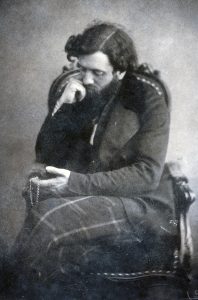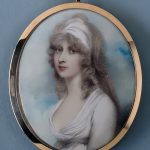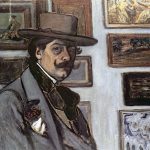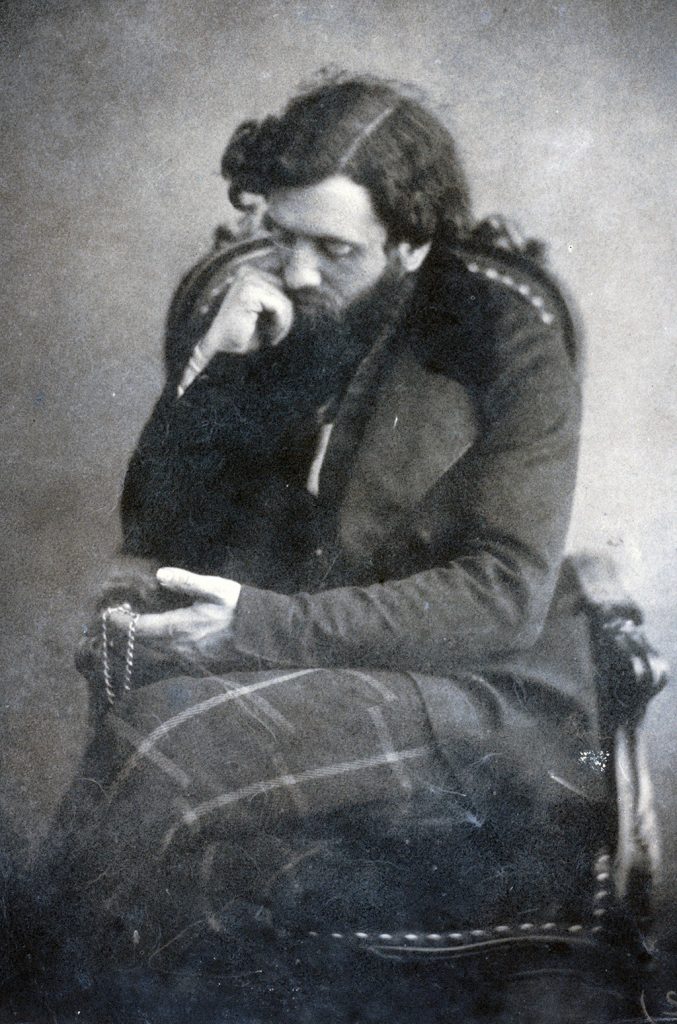
Movement(s): Photography
Jean-Louis-Henri Le Secq des Tournelles (1818 – 1882) was a French painter and photographer. After the French government made the daguerreotype open for public in 1839, Le Secq was one of the five photographers selected to carry out a photographic survey of architecture (Commission des Monuments Historiques).
Jean-Louis-Henri Le Secq des Tournelles was born in Paris, of an ancient noble family from Normandy. His father was a politician. Jean-Louis-Henri was trained in sculpture and worked in several studios. He was also a collector of wrought iron objects and the Musee le Secq des Tournelles in Rouen is devoted to him.
He started his photographic career while still working as a painter in the studio of Paul Delaroche.
He experimented with various photograph processing techniques together with his colleague Charles Negre and later worked with Gustave Le Gray learning the waxed-paper negative process. This process had the advantage that it produced negatives unlike the daguerreotype process.
He, along with Hippolyte Bayard, Edouard Baldus, Gustave Le Gray and Auguste Mestral (O. Mestral), was sent on Missions Heliographiques to document famous architectural monuments in France.
He worked mainly on cathedrals in Chartres, Strasbourg, Reims and near Paris. Cameras capable of taking large photographs, sized up to 51 cm by 74 cm, were used. His works during this Commission des Monuments Historiques are considered his finest.
In 1851 he became one of the founders of the first photographic organization of the world, the Societe heliographique (1851–1853), which was very short lived.
Le Secq des Tournelles gave up photography after 1856 but continued to paint and collect art. Around 1870 he started reprinting his famous works as cyanotypes because he was afraid of possible loss due to fading. He gave the reprints the dates of the original negatives, some of which are still in good condition.
Click here to read Le Secq’s full bio on Wikipedia.
Le Secq made his photos (and paintings) all over France. Here are many of the places where he worked (a link “⇠” to his works will appear here when published):
- Bourgogne-Franche-Comte
- Auxerre
- Montmort
- Sens
- Centre-Val de Loire
- Chartres
- Grand Est
- La Porte-du-Der
- Langres
- Marmoutier
- Molsheim
- Montmirail
- Reims
- Rosheim
- Strasbourg
- Troyes
- Hauts-de-France
- Amiens
- Laon
- Noyon
- Normandy
- Dieppe (and surroundings) ⇠
- Pays de la Loire
- L’Epine
Related Posts
- 95
- 81
- 81
 Jacques Guiaud (1810 - 1876) was a French painter and engraver; known for landscapes, cityscapes, historical scenes and assorted watercolors.
Jacques Guiaud (1810 - 1876) was a French painter and engraver; known for landscapes, cityscapes, historical scenes and assorted watercolors. - 81
 One of the very few female artists we've been able to find that painted in Normandy. Anne Rushout is British and was a Lady. Not much else is known about her.
One of the very few female artists we've been able to find that painted in Normandy. Anne Rushout is British and was a Lady. Not much else is known about her. - 81
 Maxime Maufra was a French landscape and marine painter, etcher and lithographer. He painted quite a few paintings in Normandy.
Maxime Maufra was a French landscape and marine painter, etcher and lithographer. He painted quite a few paintings in Normandy.


